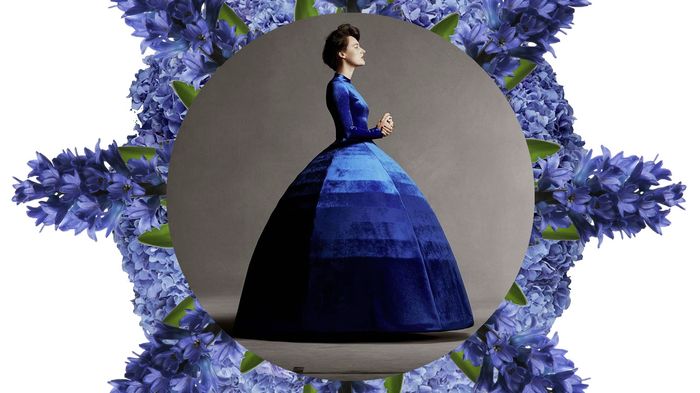Feast & Fast at the Fitzwilliam: Enticing, but not satisfying
Harry Goodwin asks whether food-themed artworks can evoke the culinary mores of their times without losing their timeless emotional appeal.
Taste, not sight, is the test of good food. Visual art centred around the depicting food, then, denies us the sensory satisfaction it would appear to offer. We are tempted, enticed, absorbed – but never satisfied.
We have to drag ourselves past endless tawdry replica banquets and shelves of old niche-interest crockery, only to be spellbound by individual wonders.
Jan de Heem’s 1646 Still Life is the first piece we encounter in ‘Feast and Fast’, showing at the Fitzwilliam Museum. This Flemish painting draws us into a simple ecstasy of naming; we register figs, cherries, grapes and lemons, recalling the elemental flavour of each in turn and marvelling at de Heem’s evocation of their moist fullness. Stepping back to view the picture as a whole, however, we’re disappointed: it is crowded and unbalanced, less than the sum of its parts.
So it goes for this exhibition, which never decides whether it is aiming for historical education or aesthetic resonance. It makes for a muddled experience: we have to drag ourselves past endless tawdry replica banquets and shelves of old niche-interest crockery, only to be spellbound by individual wonders. This confusion is particularly acute in the room displaying Dutch allegorical engravings. Approaching these as art, we’re let down: they’re muddy and washed-out, their efforts at realism botched. Straight away, it puts us in no mood to appreciate the history-minded blurb decoding the symbolism of each figure and object.
With these frustrations comes food for thought. Can food-themed artworks evoke the culinary mores of their times without losing their timeless emotional appeal? Or are they doomed to descend into a whirlpool of particulars, exquisitely rendering this fish and that fruit without achieving an overall aesthetic coherence?
The embroideries open up a world of sensory experience charged with menace and unease.
A pair of seventeenth-century English pastoral embroideries make a lovely mockery of both doubts. The first depicts a kind of absurdist Arcadia, with supersized songbirds bouncing around a shrunken piper and his wife. Gentle comedy, sharpened by a deadpan cottage-pie palette, makes it work as a holistic artwork. The second portrays biblical scenes of abundance suffused with anxiety: Eden, Cain and Abel, Abraham and Isaac. Food-as-art is tantalising, tempting our tastebuds with stitched threads and layered paint. The illusion frustrates, but it also chides: only the inauthenticity of the food before our eyes stops us from succumbing to the temptations which undo these Old Testament grandees.
The embroideries open up a world of sensory experience charged with menace and unease. Landscape with Shepherds, by the Venetian Francesco Bassano, seems at first glance a banal countryside painting. The snoring shepherd in the foreground induces complacency in the casual viewer. But look at the black clouds; the gaunt, downcast cows and sheep; the spectral pallor of the undergrowth. What fruits nature offers, it can wrench away.
We can delight ourselves with the fun, pretty, enticing mainstream in the art of food.
Jan Weenix’s 1706 painting Dead Game and Fruit is hard to like and harder to dismiss. We are confronted with a sensuous, larger-than-life depiction of a pheasant and a rabbit, both slain and strung up. Weenix’s eye for detail beguiles. We’re charmed as much by the bird’s stiff feathers as by the bunny’s golden fur. But there is blood dripping from the rabbit’s nose: this still life is still only because of human violence. The Fowl Market, a huge Flemish piece, resonates as a precocious vegan Guernica. A calm, ruddy butcher looms over a heap of animal bodies, while a grinning cat and baying dog await their fill.
These are charmless, chastising works, which is what they’re meant to be. I much prefer Gillray’s 1797 Guard-Day at St James’s, with its sharp depiction of British officers gorging themselves on sweets while Europe burns offstage. Most winning of all is Gian Domenico Valentino’s 1678 painting of a maid filleting a fish in the most orderly and well-stocked of Italian kitchens. Beneath her, a little boy is running to bother the kitchen dog: all hell is about to break loose.
We can delight ourselves with the fun, pretty, enticing mainstream in the art of food, or we can step up to the moral challenge posed by its counterpoint in Weenix and his ilk. Brueghel the Younger’s Winter Landscape with Bird Trap captures the aesthetic dilemma with aplomb. Skaters are having blameless fun down on a frozen river; up above, little birds are about to fly beneath a hunter’s trap. Do we stop and stare, or do we skate merrily on over a torrent of unease?
 News / Cambridge academics stand out in King’s 2026 Honours List2 January 2026
News / Cambridge academics stand out in King’s 2026 Honours List2 January 2026 Interviews / You don’t need to peak at Cambridge, says Robin Harding31 December 2025
Interviews / You don’t need to peak at Cambridge, says Robin Harding31 December 2025 Comment / What happened to men at Cambridge?31 December 2025
Comment / What happened to men at Cambridge?31 December 2025 News / Varsity’s biggest stories of 202531 December 2025
News / Varsity’s biggest stories of 202531 December 2025 Features / “It’s a momentary expression of rage”: reforming democracy from Cambridge4 January 2026
Features / “It’s a momentary expression of rage”: reforming democracy from Cambridge4 January 2026










